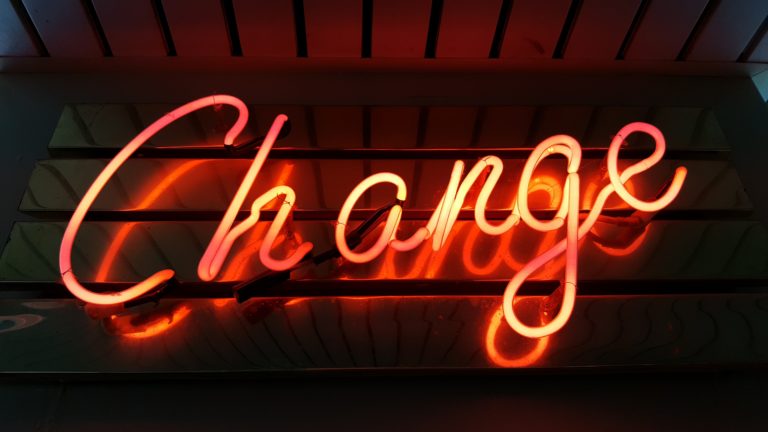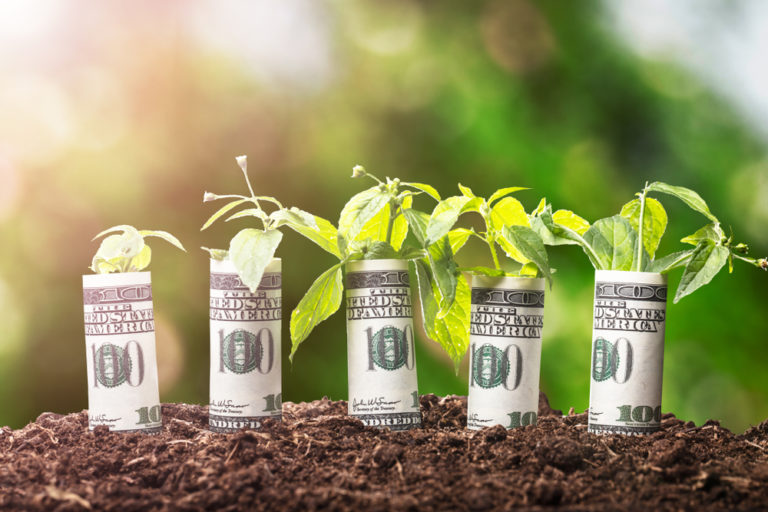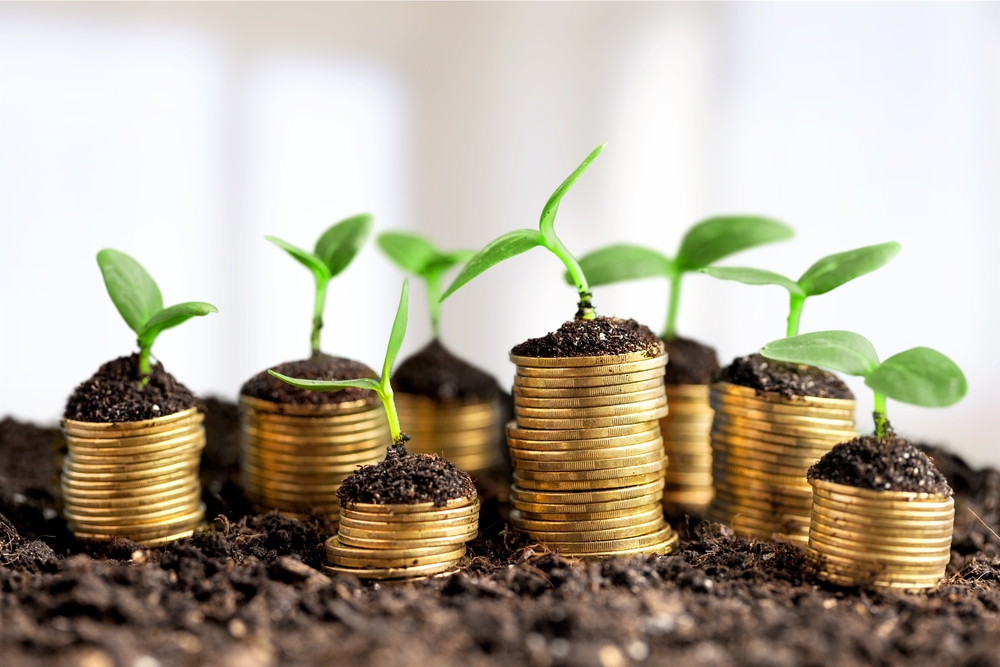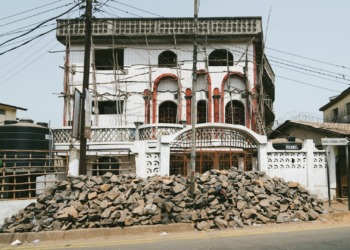Worldwide Trends Point to a Brighter Future for Renewable Infrastructure and SDG Financing
As the CEO of Bertelsmann Stiftung recently pointed out, “the clock is ticking on the SDGs.” But the same clock is also ticking on global warming. As climate change increasingly becomes part of our Zeitgeist, ensuring that the SDGs are met within the planetary boundaries becomes increasingly urgent. In order to achieve this, investment in renewable energy infrastructure in developing countries needs to multiply manifold to ensure their economic growth is sustainable in the long-term. This is where climate finance and blending can both play an important role.
The International Renewable Energy Agency estimates that an additional $25 trillion of renewable energy investment will be needed by 2050, or $700 billion a year to limit a rise in temperature to 2 degrees Celsius. This is more than double the amount of the current investment, and presents a great opportunity for investors and developing countries alike. To meet this growing need, new approaches looking at increasing private sector funding for SDGs have been gaining popularity. This is for a good reason. There is a lot of private and institutional capital in the world ready to be deployed in search for better returns. According to McKinsey, private asset managers raised nearly $750 billion globally in 2018, while institutional investors in OECD countries alone manage around $100 trillion.
At the same time, the investment landscape in developed markets has been changing. Financial conditions in developed economies have been tightening and interest rates are at record lows. The total amount of negative-yielding bonds is at nearly $9.7 trillion, an increase of more than 50% since September 2018. Approximately 27% of global government debt yields less than 0%, providing some of the lowest returns in years. This has led to a challenging environment for pension funds, most of which performed poorly overall in 2018. With ageing populations in Europe requiring pension pay-outs, funds are facing a bleak return landscape. And to confound the misery, it is apparent that the difficult market conditions are very likely to persist.
Contrary to what investors have been used to thus far, the rise of populism in OECD countries coupled with ongoing trade wars has created far greater volatility and uncertainty. Predictions about equity returns in the developed world over the next decade are also far from positive. Meanwhile, investors’ risk perceptions have been slow at catching up with the new realities, with most institutional investors still believing that they can navigate very well any upcoming volatility. Now more than ever there are very good financial reasons to diversify portfolios by investing in renewable infrastructure in developing countries. It is also a great opportunity to kill more than two birds with one stone: to improve diversification and returns, spur economic growth in developing countries, and contribute to meeting both the Paris Agreement goals and the SDGs.
Stepping up investment in the developing world also makes long-term financial sense; developing countries will be where most of future growth will take place. For example, countries such as India will benefit from a major demographic dividend. By 2020 India will be the youngest country in the world, with the median age of 29. By 2025 it will overtake China as the world’s most populous country. This means not only a growing middle class and consumer spending, but also greater energy demands — in a place where existing infrastructure simply cannot meet that demand. In addition to medium and high-income countries, Africa faces an infrastructure financing gap of the magnitude between USD 87 and 112 billion.
Making sure more private sector money, including institutional investor funding, gets channelled towards green infrastructure will play a key role for the future wellbeing of the planet and its inhabitants. The challenge is to incentivise private investors to channel more money into investments that support renewable energy and green infrastructure.

Will Blending Save the Day?
One of the approaches gaining traction is blending of public private partnerships, or the strategic use of development finance for the mobilisation of private capital towards sustainable development in developing countries. Development finance institutions (DFIs) and multilateral development banks (MDBs) are key players in facilitating blending, due to their existing expertise and market positioning. Public subsidies are often used to reduce the risk for private investors through first loss guarantees or preferential returns.
The DFIs and MDBs currently dominate the impact investing market, in which investments generate a positive impact on society, while also creating positive returns for the investors. They have a long-track record of operating in developing countries and possess good local expertise. The appetite for impact investing is growing, with estimates indicating that private capital (private debt, venture capital or equity) interest in impact investing could be approximately between $5 trillion and $21 trillion.
DFIs especially are famed for their effective due diligence and local expertise, which can help to create “demonstration effects” — showing that a market or a country is investable in, and thus catalysing additional investment from other sources. It can also narrow the gap between perceived and actual risks of investing in developing markets.
One of the most promising examples of blending and mobilising large-scale finance for infrastructure is that of the World Bank’s International Finance Corporation (IFC). Its initiatives include Blended Climate Finance (BCF), Managed Co-Lending Portfolio Program for Infrastructure (MCPP Infrastructure), and Blended Finance Facility (BFF). IFC allows institutional investors to participate in its senior loan portfolio and thus increase their exposure to emerging market infrastructure debt, all the while doing so with managed risk. IFC monitors its development impact and provides essential expertise.
IFC itself has not avoided criticism. Civil society groups have drawn attention to the IFC’s indirect funding of projects via financial intermediaries who then have failed to uphold environmental and social standards. While the IFC has been emphasizing the multiplier effect of its intermediary investments, it is a very valid criticism that it ends up outsourcing its environmental and social responsibilities to others. IFC has been reviewing its practices and some progress has been reported, but change has been slow.
Another remarkable example is the innovative blended finance facility, called Facility for Energy Inclusion Off-Grid Energy Access Fund or FEI OGEF, which is a collaboration between African Development Bank, Global Environment Facility (GEF), Calvert Impact Capital (CIC) and Nordic Development Fund (NDF). Its focus is on providing clean energy to off-grid households by using local currency debt financing. FEI OGEF also crowds in local financial institutions as co-lenders. Innovative collaborations between multiple stakeholders like these pave the way for more private sector involvement and serve as real-life examples, as they demonstrate the viability of new investment opportunities for investors.
DFIs and MDBs have helped tackle information and coordination issues, using their local expertise to identify quality bankable projects. Their operational capacity to develop portfolios of infrastructure projects is a key strength.
Pressures have been growing for the DFIs and MDBs to have a greater role in mobilizing private capital and operating in more difficult countries, and to significantly scale up their mobilisation and blending efforts. But the reality on the ground is much more complex, with trade-offs and hidden risks.
For example, our latest report outlines the reasons DFIs in particular are unable to scale up private finance mobilisation from “Billions to Trillions.” It is important to remember that investing in developing country projects is a bottom-up process which is both time and labour intensive. In some cases, there might be a lack of investable or large enough projects that easily lend themselves to blending. Importantly, blending has to be carried out and projects assessed by adequately qualified experts in the field, ensuring that investments are viable and profitable. All of this takes time, and without major changes, the current set-up does not allow for major scaling up.

An additional challenge for infrastructure projects is the affordability of the products and services. For optimal development impact, prices have to be at a level that leaves no one behind. But this creates a risk that projects that are subsidised will distort the market and lead to squeezing out of other viable commercial projects. For example, if a subsidised company offers cheap energy, this may create market expectations that all other companies will offer similar rates. But because that is commercially impossible without an inherent subsidy, this would result in less competitors entering the market and would crowd out private investors willing to invest in similar infrastructure projects that do not have concessional financing. If a market gets distorted in such a way, this can be counter-productive in the long-term.
Another risk that is raising concern is over-subsidising the private sector by providing too much concessional financing, even when it might not be necessary. To avoid the worst risks, blending has to be time limited, rationed and proportional. It also should be used only when there is a clear and strong justification for it. Ongoing evaluation of concessional financing is important to avoid the worst excesses and unrealistic investor expectations.
ODA Is Here to Stay
Meanwhile, official development assistance (ODA) that could help finance renewable infrastructure has been flatlining in the last couple of years. While blending is both a trendy term and a promising avenue for mobilising private finance, ODA still has a prominent role to play. Some projects that have great development impact on the ground are not profitable in the shorter or sometimes even longer term. But private investors expect profitability sooner or later, and as such, these projects are very unlikely to be financed by private capital or by blending. When blending is used, profitability and commercial sustainability might take longer in least developed countries (LDCs), meaning that phasing out concessional support will also take longer. In some cases, when tariff affordability and social equity problems are an issue, ODA or government financing might still be needed.
As the Overseas Development Institute (ODI) argues in its report, sometimes projects that are important for development in lower income countries will still need ODA to finance them. ODI has also revealed that DFIs and MDBs struggle most when it comes to mobilising private finance for the low-income countries (LICs) in particular. The findings show that each $1 invested by DFIs and MDBs mobilises $0.75 private finance for developing countries, but only £0.37 for LICs. This is not entirely surprising, as LICs have the most challenging markets and the highest risk perceptions.
The reality is that ODA will remain a key source of funding and should be used not only for providing concessional finance. Direct ODA and blending can serve different purposes in different environments. A complex world needs all sorts of funding, something that should not be lost in the on-going debate about blending.
The Way Ahead
It is high time to leverage the rising pressures on companies and investors to become more sustainable. As climate change effects become more visible and public outrage grows, pressures for more sustainable practices will grow simultaneously. This means that there will be greater opportunities to improve SDG financing as investors seek positive impact.
The main challenges will remain the same as they were a few years ago, for example, how to ensure that increasing private investment is aligned with the developing country needs and has the optimal development impact on the ground. These challenges, however, have always applied both to public and private investments. Continuous work on improving country ownership and transparency can help. So can efforts to better align stakeholder expectations and practices.
Examples show that DFIs and MDBs can successfully act as intermediaries between private and public interests. Further scaling up their capacity to act as intermediaries can have a positive effect on blending and mobilisation; their position allows them to bring together a large variety of stakeholders. Bringing together private investors of all types, governments, regulators and other stakeholders helps the learning process that can lead to better policies and thus outcomes on the ground.
Editor’s Picks — Related Articles:
 “How Will We Finance the New Deal for Nature?”
“How Will We Finance the New Deal for Nature?”

“Should Governments Support The Impact Economy?”
Public and multilateral actors can also make a difference with greater efforts aimed at improving education and training for the private sector, when it comes to impact investing or investing in renewable energy infrastructure. A recent survey showed that up to ¾ of investors feel that the lack of training acts as an impediment to greater impact investment allocations. Yet many also confirmed that they would accept lower returns for greater impact.
For example, HSBC has recently offered to develop an Association of Southeast Asian Nation (ASEAN) blended “finance toolbox” intended to standardise instruments that address common risks associated with sustainability-linked infrastructure projects. It has also recommended creating a standardised and validated report that investors and governments can use to evaluate progress on green investment, and to promote financing of sustainability-linked infrastructure.
One of the major factors holding back green infrastructure projects has been the lack of local government capacity when dealing with the private sector, and therefore building this capacity can act as a catalyst to develop sustainable infrastructure projects. Leveraging positive examples of returns can also help. By way of illustration, the unlisted renewable infrastructure market, which is growing fairly continuously, has also proved to be quite profitable: KLP has reported that its return rate on renewable infrastructure was around 11%.
When it comes to evaluating blending, attention should be paid to the investment patterns over longer-term, rather than to the ratios of private to public finance in individual deals. If initial blending over time has led to increased independent private investment, that is a positive impact.
The way forward is to build on past successes, demonstrating the viability of projects and markets, while trying to lower private investor risk perceptions. As time passes, emphasis should be placed on increasing the ratio of private to public investment, limiting the use of explicit or implicit public subsidies. Blended finance has been around for long enough for its practitioners to draw important lessons and consequently to work towards improving how it works, and what its outcomes are.

Another important issue that is often overlooked is the need for more and better-quality investment opportunities. Deal origination and structuring could be another way of expanding private investor participation and thus mobilising more capital. While this might not be seen as mobilisation under current understanding, it does highlight why what counts as mobilisation might need a rethink. Creating opportunities is not an easy task but it could have greater impact.
Many investors complain about insufficient opportunities to make large scale green investments, so global green finance still has a lot of room for growth. The increase in the volume of green bonds is a good example of investor appetite. Green bonds have seen phenomenal growth over the last decade, and are expected to reach a record USD 200bn in 2019. The green bond fund recently launched by HSBC Global Asset Management and IFC capitalises on this trend, while targeting non-financial or “real economy” issuers in emerging markets. The creation of a larger offering of green bonds that are aimed at helping the “real economy” in developing countries is a real opportunity for DFIs.
As the geopolitical and market conditions keep changing, DFIs and MDBs will need to keep thinking outside the box, and possibly trial a new idea or two. Or at the very least ensure they remain open to new ideas and approaches. Some of these ideas might also involve using new and emerging technologies that can help tackle issues of transparency or efficiency.
The world has enough expertise and money to address the SDG challenges, now it is all about fitting the pieces of the puzzle together.
All things considered, there is still one important truth to bear in mind. Scalability and standardisation come with trade-offs. Impact investing and SDG-aligned investing has seen unprecedented growth in the last few years, but measuring the actual impact of this growth has lagged. Of course, different approaches may well be needed for different countries. A one size-fits-all is unlikely to work everywhere, but with new technologies and improved data, it should be possible to tackle some of the issues better than before, and to improve transparency – something that has been on the agenda for a long time.
Transparency will also allow keeping an eye on whether environmental and social responsibilities are met, which will be important when trying to scale up the investments.
Even more important will be for DFIs, MDBs and other involved stakeholders to listen to the criticisms coming from the civil society, including the development NGOs and local communities. More constructive feedback should help improve the practices and ensure that the impact really is there.
In the past, part of the problem has been the different actors existing in separate universes, with not enough opportunities to interact and discuss face-to-face. The growing salience of climate emergency and SDGs has led to some positive changes, helping to create a wider debate between all stakeholders. This needs to be kept up and built upon, so that the different professional communities do not stay in their silos.
The world has enough expertise and money to address the SDG challenges, now it is all about fitting the pieces of the puzzle together. So, while there is still a long way to go, hopefully the going keeps getting better.










